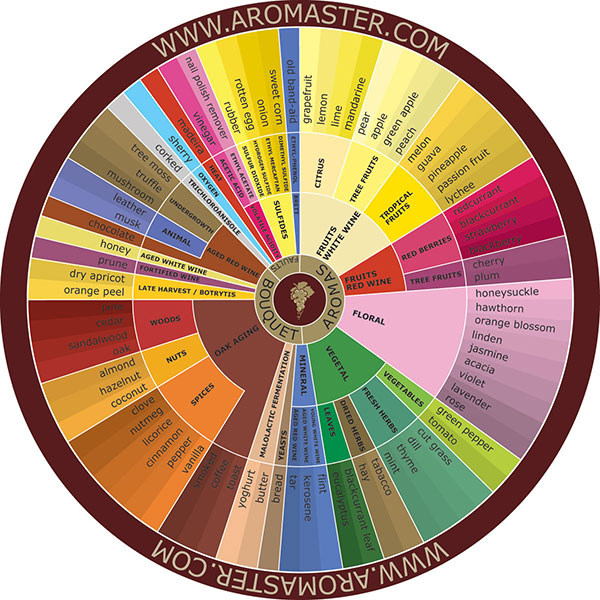Working in London in the self-indulgent 1980s, one of my morning duties was to choose the wines for the boardroom that, two hours later, would accompany lunch. The vocabulary we used then was that of class and gender. Fine Bordeaux? “Manly” and “aristocratic”; red Burgundy? “Demure,” perhaps, and “feminine.” The polite way to describe the rough wines coming from Spain? “Rustic.”
The book Wines – Their Sensory Evaluation, published in 1976 by two professors at the University of California, Davis, changed the way wine writing was written. Their work introduced a new lexicon of fruit and flowers popularized by their colleague, Ann Noble, who created the “Wine Aroma Wheel.” The three concentric aroma wheels have descriptions that become more and more specific as the reader moves from the center to the perimeter: “woody” gets refined, via “burned,” to either “coffee,” “burnt toast” or “smokey.”

Many of these aromas and flavors spring from volatile organic compounds that are in the grapes or created in the winemaking process. Diacetyl, for example, is the compound that masquerades as butter on popcorn at the movie theater. It’s a side effect of the malolactic conversion in winemaking that transforms harsh malic acid into softer lactic acid through the action of bacteria that colonize oak barrels. The perception threshold of diacetyl varies from 2.8mg/l for Cabernet Sauvignon, 0.9mg/l for Pinot Noir to 0.2mg/l for Chardonnay. That’s why we most easily recognize that some Chardonnay is “buttery.”
If you think some of the romance has been lost with this fruit-and-flowers approach, you’re not alone. Matt Kramer, the most thoughtful columnist at the Wine Spectator, wrote in his 2015 book, True Taste: The Seven Essential Wine Words: “Too many tasting notes now offer little more than a string of fanciful flavor descriptors with the judgment revealed only in the score itself—a numerical ‘thank you ma’am’, after the more energetic ‘slam, bam’ of the flavor descriptors.”
French wine writers take music as their metaphor to describe wine, using words like “registre,” “harmonie” and “finale” in their tasting notes. On Sunday afternoon, I opened a beautifully chilled bottle of Elio Perrone Bigaro rosé, a low-alcohol, lightly sparkling Piedmontese blend of Brachetto and Muscat, slightly sweet and cranberry tart. It was ABBA in a glass.
Wine Challenge No.4:
For your next wine encounter, take Kramer’s approach, implied in the title of his book, and consider the wine in terms of insight, harmony, texture, layers, finesse, surprise and nuance. Or you can match it to a soundtrack.


